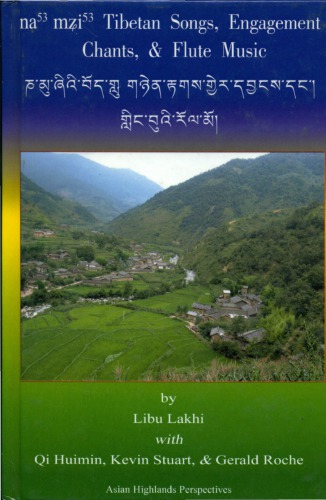Product desciption
Asian Highlands Perspectives Volume 4 Chinas Namzi Tibetan Songs Engagement Chants Flute Music Libu Lakhi Li Jianfu by Libu Lakhi (li Jianfu 李建富, Dawa Tenzin) With Qi Huimin 祁慧民, Charles Kevin Stuart, And Gerald Roche. instant download after payment.
The namʑi are one of several scattered groups of people, officially classified by the Chinese government as Zang 藏 (ethnic Tibetans), who live mostly in southern Sichuan 四川 but also in a few places in the north of the province. Certain of these Qiangic-speaking peoples were once referred to in historical documents as 'Xifan' 西番 (Western Barbarians) (Harrell 2001:69). Strongly influenced by other local cultures, cultural and linguistic connections between these groups and the larger Tibetan communities to the north and west vary in degree. The namʑi who figure in this study live in the vicinity of Xichang City 西昌市 , the capital of the Da Liangshan Yi Nationality Autonomous Prefecture 大凉 山彝族自治州 where the dominant ethnic groups are the Han 汉 Chinese and a major subgroup of the Yi ethnic group, the Nuosu 诺苏 . The namʑi maintain a sense of distinct ethnic identity within their compact communities, though many individuals are conversant in the languages and customs of their neighbors. Among the features that distinguish the namʑi are language, ritual traditions, foodways, aspects of material culture, and traditions of oral performance. The present study is a straightforward, pragmatic attempt to document the particulars of namʑi song and musical traditions comprising the local 'performance-scape'.
The primary researcher, Libu Lakhi, is a native of the community who was trained in a specialized mode of auto-ethnography developed by Charles Kevin Stuart and Gerald Roche at Qinghai Normal University 青海师范大学, Xining City 西宁市 , Qinghai Province 青海省 . Drawing on ethnomusicology, socio-linguistics, and the 'performance' school of folkloristics, the model is intended to enable local peoples to document and display their own traditions in a form available to scholars and interested persons on a global scale. This efficient system can be effectively utilized in the sort of small-scale formats familiar to folklorists and ethnomusicologists. In spirit, the system of training is not dissimilar to the methods employed in China since the May Fourth Movement era (1919 to the early 1930s) where college students were trained to collect local song and story texts, methods revived and recalibrated during government-sponsored folklore collecting activities in the 1950s, and again since the 1980s.
The present study, however, not only stresses the collection of song and chant texts, but contextualizes them by providing detailed descriptions of the performers and their lives, multi-linear representations of the song lyrics and musical notation, and details of the performance process. While the authors have not attempted to place the songs and music in a greater regional context, the level of detail and documentation will allow the collection to serve as material for in-depth comparative study in regards to other traditions. In the immediate vicinity, comparative studies could be made among the melodies, lyrics, and dynamics of performance in traditions of the various Nuosu and Han communities, as well as the Mosuo 摩梭 people of the Lake Lugu 泸沽湖 area on the border of Sichuan and Yunnan 云 南 where the phrase mada mi, an element of many songs in this volume, is also part of song lore. In a broader context, this study will take on new meaning as it is (hopefully) joined by other works that bring attention to the multitude of sub-traditions grouped under the larger official ethnic categories, as the mosaic of ethnicity in southwest China is further explored, documented, and made available for appreciation to audiences beyond the local.
---Mark Bender (The Ohio State University)


